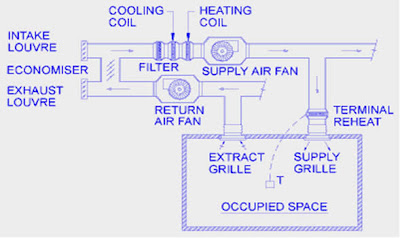In the broadest sense air conditioning can refer to any form of cooling, heating, ventilation or disinfection that modifies the condition of air, typically for thermal comfort.
Engineers define the process of air-conditioning as one in which a system of mechanical components-usually including a compressor, a fan, condenser coil, evaporator coil and a chemical refrigerant - extracts heat from indoor air and transfers it to outside, leaving the cooled indoor air to be re-circulated.
The Cooling Cycle Works as Follows
-The compressor compresses cool Freon gas, causing it to become hot, high-pressure Freon gas.
-From the compressor, this hot and high pressure gas passes into the condenser where this gas runs through a set of coils so it can dissipate its heat, and it gradually condenses inside the condenser into a liquid.
-The high pressure Freon liquid runs through an expansion valve, the expansion valve acts to lower the pressure of the liquid thereby reducing the boiling point temperature of the liquid.
-The low pressure liquid then passes through the evaporator and in the process it evaporates to become cold, low-pressure Freon gas . This cold gas runs through a set of coils that allow the gas to absorb heat and cool down the air inside the building.


No comments:
Post a Comment